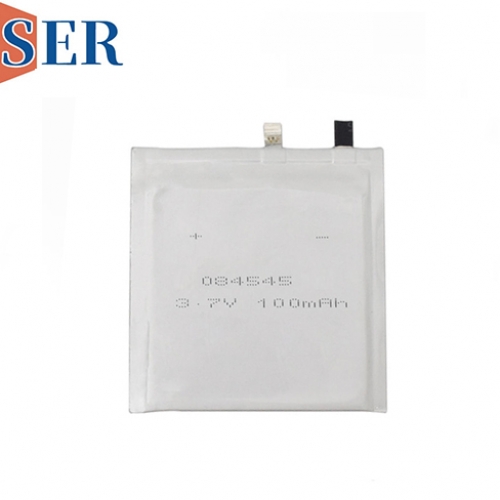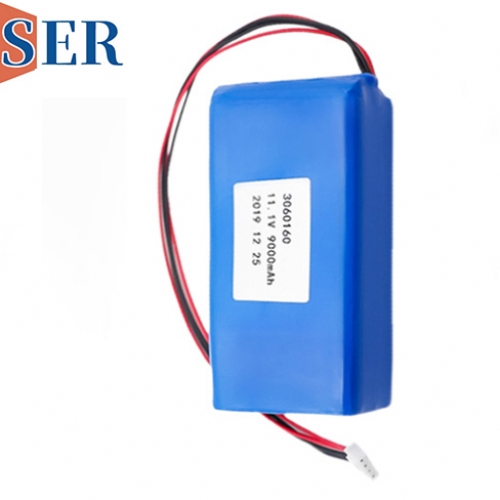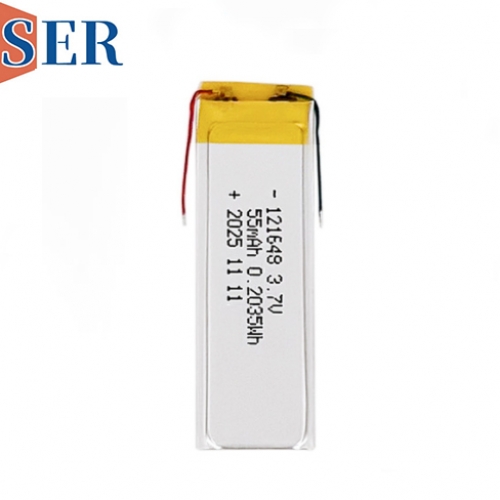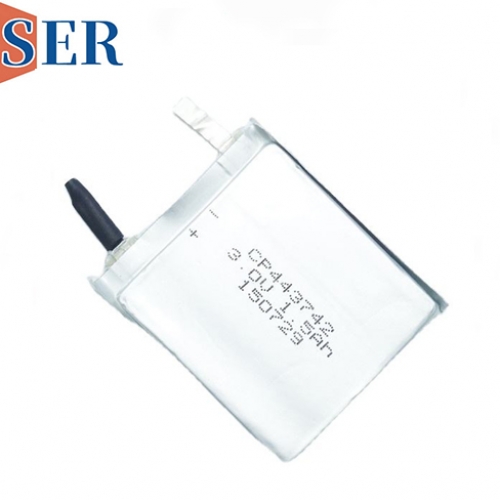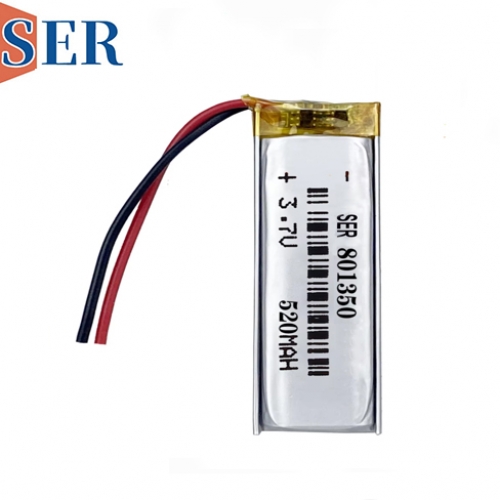Primary Non-rechargeable Pouch Cell Batteries: Exploring the World of Slim Flat LiMnO₂ Options (CP501932, CP452124, CP444844, CP251525, CP502025, CP502525)
Primary Non-rechargeable Pouch Cell Batteries: Exploring the World of Slim Flat LiMnO₂ battery
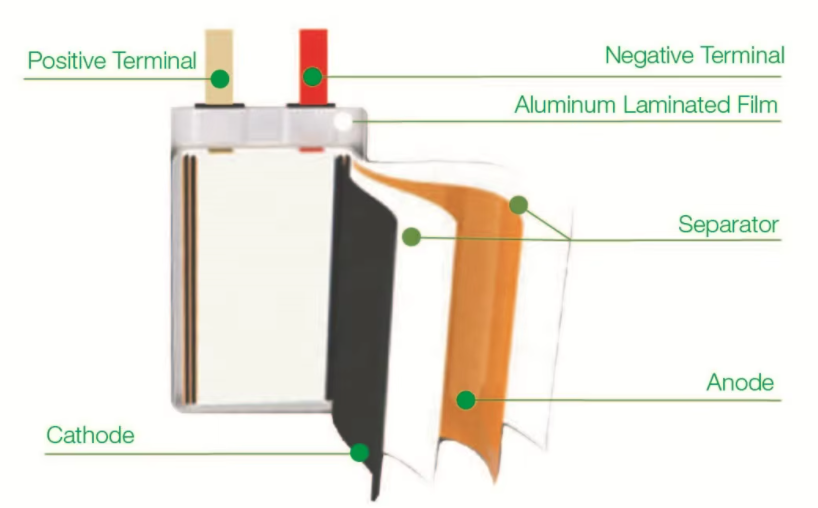
Abstract
In the realm of portable electronic devices and specialized applications, primary non-rechargeable pouch cell batteries have emerged as a reliable and versatile power source. Among these, lithium manganese dioxide (LiMnO₂) batteries, known for their stable voltage output and slim, flat form factors, are gaining significant attention. This article delves into the characteristics, applications, advantages, and challenges associated with primary non-rechargeable pouch cell batteries with model numbers CP501932, CP452124, CP444844, CP251525, CP502025, and CP502525, all operating at 3V/3.0V. We explore their design, performance metrics, and the factors that make them suitable for various niche markets.
Introduction
The electronics industry is constantly evolving, with an increasing demand for compact, lightweight, and reliable power sources. Primary non-rechargeable batteries, which are designed for single-use applications, play a crucial role in powering devices where recharging is impractical or impossible. Pouch cell batteries, in particular, offer a slim and flat form factor that makes them ideal for applications with strict space constraints. Among the various chemistries available, LiMnO₂ batteries stand out for their stable 3V voltage output, making them a popular choice for a wide range of devices.
Understanding LiMnO₂ Batteries
Chemistry and Working Principle
Lithium manganese dioxide (LiMnO₂) batteries are a type of primary lithium battery. The anode is typically made of lithium metal, while the cathode consists of manganese dioxide (MnO₂). During discharge, lithium ions move from the anode to the cathode through an electrolyte, generating an electric current. The chemical reaction at the cathode involves the reduction of MnO₂, which contributes to the stable 3V voltage output characteristic of these batteries.
Key Features of LiMnO₂ Batteries
Stable Voltage Output: LiMnO₂ batteries provide a relatively constant 3V voltage throughout most of their discharge cycle, ensuring consistent device performance.
High Energy Density: They offer a high energy-to-weight ratio, allowing for longer device runtime without adding excessive weight.
Wide Operating Temperature Range: LiMnO₂ batteries can operate effectively in a broad temperature range, making them suitable for various environmental conditions.
Low Self-discharge Rate: They retain their charge for extended periods when not in use, ensuring reliability for long-term storage.
Pouch Cell Design and Form Factors
Advantages of Pouch Cells
Pouch cell batteries are constructed by enclosing the battery components in a flexible, laminated pouch made of materials such as aluminum foil and polymer films. This design offers several advantages over traditional cylindrical or prismatic batteries:
Slim and Flat Form Factor: Pouch cells can be manufactured in very thin and flat shapes, making them ideal for applications with limited space.
Customizable Dimensions: The pouch design allows for easy customization of battery dimensions to fit specific device requirements.
Lightweight: The use of lightweight materials in the pouch construction contributes to the overall weight reduction of the battery.
Specific Form Factors: CP501932, CP452124, CP444844, CP251525, CP502025, CP502525
The model numbers CP501932, CP452124, CP444844, CP251525, CP502025, and CP502525 refer to specific pouch cell battery dimensions. For example, a CP501932 battery might measure approximately 50mm in length, 19mm in width, and 3.2mm in thickness. These form factors are tailored to meet the space requirements of various electronic devices.
Customization and Flexibility
One of the key strengths of pouch cell batteries is their flexibility in terms of customization. Manufacturers can adjust the dimensions, capacity, and even the chemical composition of the battery to suit specific application needs. This level of customization ensures that the battery fits perfectly into the device enclosure, optimizing space utilization and performance.
Applications of Primary Non-rechargeable Pouch Cell LiMnO₂ Batteries
Medical Devices
In the medical field, primary non-rechargeable pouch cell LiMnO₂ batteries are used in a variety of devices, including hearing aids, glucose meters, and portable diagnostic equipment. These devices often require a stable power source with a long shelf life and reliable performance.
Example: Hearing Aids
Hearing aids need to be small, lightweight, and comfortable to wear for extended periods. The slim and flat form factor of pouch cell batteries, combined with their stable 3V voltage output, makes them ideal for powering hearing aids. Additionally, the low self-discharge rate ensures that the hearing aids remain powered even when not in use for extended periods.
Remote Sensors and IoT Devices
The Internet of Things (IoT) ecosystem is expanding rapidly, with a vast array of connected devices such as environmental sensors, smart home gadgets, and industrial monitoring systems. These devices often operate in remote or hard-to-reach locations, requiring reliable and long-lasting power sources.
Example: Environmental Sensors
Environmental sensors used for monitoring air quality, temperature, humidity, and other parameters need to be small and unobtrusive. Primary non-rechargeable pouch cell LiMnO₂ batteries can fit into the compact sensor casing, providing the necessary power to transmit data wirelessly while maintaining a low profile. The stable voltage output ensures accurate sensor readings, and the long shelf life allows for extended deployment periods without the need for frequent battery replacement.
Backup Power for Critical Systems
In some applications, such as emergency lighting, security systems, and industrial control panels, a reliable backup power source is essential. Primary non-rechargeable pouch cell batteries can provide a stable and long-lasting power backup in case of a primary power failure.
Example: Emergency Lighting
Emergency lighting systems need to be ready to activate immediately in the event of a power outage. Pouch cell LiMnO₂ batteries can be integrated into the lighting fixtures, providing the necessary power to illuminate escape routes and ensure safety. The stable 3V voltage output ensures consistent brightness, and the long shelf life guarantees that the batteries will be ready when needed.
Consumer Electronics
From remote controls to electronic toys and portable medical devices, consumer electronics often rely on primary non-rechargeable batteries for power. Pouch cell LiMnO₂ batteries offer a slim and lightweight solution that can fit into the compact designs of these devices.
Example: Remote Controls
Remote controls for televisions, air conditioners, and other home appliances need to be small and easy to handle. The slim form factor of pouch cell batteries allows for a more ergonomic design, while the stable voltage output ensures reliable operation of the remote control functions.
Performance Metrics and Characteristics
Voltage and Capacity
The 3V/3.0V voltage output is a defining characteristic of LiMnO₂ batteries. This stable voltage ensures consistent device performance throughout most of the battery's discharge cycle. The capacity of the batteries, measured in milliampere-hours (mAh), determines how much energy they can store and, consequently, how long they can power a device before needing to be replaced.
Impact on Device Runtime
The choice of battery capacity directly impacts the device's runtime. Higher capacity batteries can provide longer usage times but may also increase the battery's size and weight. Manufacturers need to strike a balance between capacity and form factor to meet the specific requirements of their devices.
Discharge Characteristics
Understanding the discharge characteristics of LiMnO₂ batteries is crucial for optimizing device performance. These batteries typically have a relatively flat discharge curve, meaning that the voltage remains relatively constant until the end of the discharge cycle. This characteristic ensures consistent device operation and helps to prevent sudden power failures.
Temperature Effects on Discharge
Temperature can have a significant impact on the discharge performance of LiMnO₂ batteries. Higher temperatures can increase the self-discharge rate and reduce the overall capacity of the battery. Conversely, extremely low temperatures can slow down the chemical reactions within the battery, leading to reduced power output. Manufacturers need to consider the operating temperature range of their devices and select batteries that can perform reliably under those conditions.
Shelf Life and Storage
The shelf life of primary non-rechargeable batteries is an important consideration, especially for devices that may be stored for extended periods before use. LiMnO₂ batteries are known for their low self-discharge rate, which allows them to retain their charge for several years when stored properly.
Storage Conditions
To maximize the shelf life of LiMnO₂ batteries, they should be stored in a cool, dry place at a moderate temperature. High temperatures and humidity can accelerate the self-discharge process and reduce the battery's capacity over time. Additionally, it is important to avoid storing batteries in a fully charged or fully discharged state, as this can also affect their performance.
Safety Considerations and Compliance
Battery Protection and Safety Features
While primary non-rechargeable pouch cell LiMnO₂ batteries are generally safe to use, it is important to incorporate appropriate safety features to prevent potential hazards. These features may include:
Overcharge Protection: Although these batteries are non-rechargeable, overcharge protection can still be relevant in cases where the battery is accidentally connected to a charging source.
Over-discharge Protection: Preventing the battery from being discharged below a certain voltage limit can help to maintain its performance and prevent damage.
Short-circuit Protection: Detecting and interrupting short circuits can prevent overheating and potential fire hazards.
Regulatory Compliance
Primary non-rechargeable batteries must comply with various international safety standards and regulations to ensure consumer safety. These standards may include requirements for battery construction, labeling, and performance.
Key Safety Standards
Some of the key safety standards for primary non-rechargeable batteries include:
IEC 60086: Specifies safety requirements for primary batteries.
UN 38.3: Pertains to the transportation of lithium batteries, ensuring they are safe for air, sea, and land transport.
UL 1642: Covers the safety requirements for lithium batteries, including those used in pouch cell form factors.
Challenges and Limitations
Single-use Nature
One of the main limitations of primary non-rechargeable batteries is their single-use nature. Once the battery is discharged, it cannot be recharged and must be replaced. This can be a disadvantage in applications where frequent battery replacement is inconvenient or costly.
Environmental Impact
The disposal of primary non-rechargeable batteries also raises environmental concerns. These batteries contain materials such as lithium and manganese, which can be harmful to the environment if not disposed of properly. Manufacturers and consumers need to be aware of proper battery recycling and disposal methods to minimize their environmental impact.
Cost Considerations
In some cases, primary non-rechargeable batteries may be more expensive than rechargeable alternatives on a per-use basis. This is especially true for applications where the battery needs to be replaced frequently. However, the cost-effectiveness of primary batteries depends on various factors, including the device's power requirements, the frequency of use, and the cost of rechargeable battery systems.
Cost-benefit Analysis
Manufacturers and consumers need to conduct a cost-benefit analysis to determine whether primary non-rechargeable batteries or rechargeable alternatives are more suitable for a particular application. Factors to consider include the initial cost of the battery, the cost of replacement batteries, the cost of recharging infrastructure (in the case of rechargeable batteries), and the environmental impact.
Future Outlook and Innovations
Advancements in Battery Chemistry
Ongoing research and development in battery chemistry are focused on improving the performance, safety, and environmental sustainability of primary non-rechargeable batteries. Innovations such as the development of new electrode materials and electrolyte formulations could lead to batteries with higher energy densities, longer shelf lives, and reduced environmental impact.
Potential Impact on Pouch Cell Batteries
If these advancements are successfully implemented, they could have a significant impact on the pouch cell battery market. Higher energy densities could allow for even smaller and lighter batteries with longer runtimes, making them even more suitable for compact electronic devices. Additionally, improved safety and environmental sustainability could enhance the market acceptance of primary non-rechargeable batteries.
Integration with Smart Technologies
The integration of primary non-rechargeable pouch cell batteries with smart technologies is another emerging trend. For example, batteries could be equipped with sensors that monitor their state of charge, temperature, and other parameters. This information could be transmitted wirelessly to the device or a central monitoring system, allowing for more efficient battery management and maintenance.
Applications in IoT and Smart Devices
In the context of the IoT and smart devices, the integration of smart battery technologies could enable more intelligent and autonomous operation. For example, sensors could detect when the battery is running low and automatically trigger a replacement or alert the user. This could improve the reliability and convenience of IoT devices, especially those that are deployed in remote or hard-to-reach locations.
Sustainability and Recycling
As the demand for primary non-rechargeable batteries continues to grow, so does the need for sustainable practices in their production and disposal. Manufacturers are increasingly focusing on using environmentally friendly materials and developing efficient recycling processes to minimize the environmental impact of battery production and waste.
Green Battery Initiatives
Some of the initiatives aimed at promoting sustainability in the battery industry include:
Use of Recycled Materials: Incorporating recycled materials into battery production to reduce the reliance on virgin resources.
Energy-efficient Manufacturing: Implementing energy-efficient manufacturing processes to reduce greenhouse gas emissions.
Battery Recycling Programs: Establishing battery recycling programs to recover valuable materials and prevent batteries from ending up in landfills.
Conclusion
Primary non-rechargeable pouch cell LiMnO₂ batteries with model numbers CP501932, CP452124, CP444844, CP251525, CP502025, and CP502525 offer a reliable and versatile power source for a wide range of applications. Their slim and flat form factors, stable 3V voltage output, and long shelf life make them ideal for devices with strict space constraints and long-term storage requirements.
However, the single-use nature of these batteries and their environmental impact present challenges that need to be addressed. Ongoing research and development in battery chemistry, integration with smart technologies, and a focus on sustainability and recycling are key areas that could shape the future of primary non-rechargeable pouch cell batteries.
As the electronics industry continues to evolve, the demand for compact, lightweight, and reliable power sources will remain high. Primary non-rechargeable pouch cell LiMnO₂ batteries are well-positioned to meet these demands, providing a stable and long-lasting power solution for a variety of niche markets. By continuing to innovate and improve, manufacturers can ensure that these batteries remain a viable and sustainable option for years to come.

